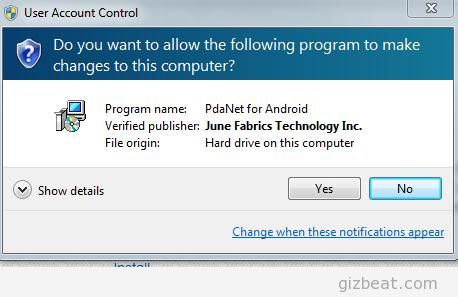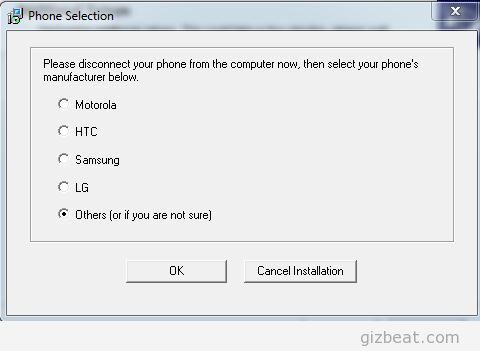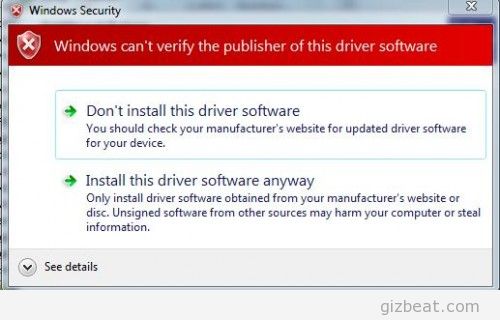bLACKsTARs
This blog is all about a combination of knowledge and fun!!!. Our mission is Knowledge with fun :D
Friday, 7 November 2014
Thursday, 16 October 2014
Do you know how Ebola virus came into existence?
Key facts
- Ebola virus disease (EVD), formerly known as Ebola haemorrhagic fever, is a severe, often fatal illness in humans.
- The virus is transmitted to people from wild animals and spreads in the human population through human-to-human transmission.
- The average EVD case fatality rate is around 50%. Case fatality rates have varied from 25% to 90% in past outbreaks.
- The first EVD outbreaks occurred in remote villages in Central Africa, near tropical rainforests, but the most recent outbreak in west Africa has involved major urban as well as rural areas.
- Community engagement is key to successfully controlling outbreaks. Good outbreak control relies on applying a package of interventions, namely case management, surveillance and contact tracing, a good laboratory service, safe burials and social mobilisation.
- Early supportive care with rehydration, symptomatic treatment improves survival. There is as yet no licensed treatment proven to neutralise the virus but a range of blood, immunological and drug therapies are under development.
- There are currently no licensed Ebola vaccines but 2 potential candidates are undergoing evaluation.
Background
The Ebola virus causes an acute, serious illness which is often fatal if untreated. Ebola virus disease (EVD) first appeared in 1976 in 2 simultaneous outbreaks, one in Nzara, Sudan, and the other in Yambuku, Democratic Republic of Congo. The latter occurred in a village near the Ebola River, from which the disease takes its name.The current outbreak in west Africa, (first cases notified in March 2014), is the largest and most complex Ebola outbreak since the Ebola virus was first discovered in 1976. There have been more cases and deaths in this outbreak than all others combined. It has also spread between countries starting in Guinea then spreading across land borders to Sierra Leone and Liberia, by air (1 traveller only) to Nigeria, and by land (1 traveller) to Senegal.
The most severely affected countries, Guinea, Sierra Leone and Liberia have very weak health systems, lacking human and infrastructural resources, having only recently emerged from long periods of conflict and instability. On August 8, the WHO Director-General declared this outbreak a Public Health Emergency of International Concern.
A separate, unrelated Ebola outbreak began in Boende, Equateur, an isolated part of the Democratic Republic of Congo.
NOTE: The virus family Filoviridae includes 3 genera: Cuevavirus, Marburgvirus, and Ebolavirus. There are 5 species that have been identified: Zaire, Bundibugyo, Sudan, Reston and Taï Forest. The first 3, Bundibugyo ebolavirus, Zaire ebolavirus, and Sudan ebolavirus have been associated with large outbreaks in Africa. The virus causing the 2014 west African outbreak belongs to the Zaire species.
Transmission
It is thought that fruit bats of the Pteropodidae family are natural Ebola virus hosts.
Ebola is introduced into the human population through close contact with the blood, secretions, organs or other bodily fluids of infected animals such as chimpanzees, gorillas, fruit bats, monkeys, forest antelope and porcupines found ill or dead or in the rainforest.
Ebola then spreads through human-to-human transmission via direct contact (through broken skin or mucous membranes) with the blood, secretions, organs or other bodily fluids of infected people, and with surfaces and materials (e.g. bedding, clothing) contaminated with these fluids.
Health-care workers have frequently been infected while treating patients with suspected or confirmed EVD. This has occurred through close contact with patients when infection control precautions are not strictly practiced.
Burial ceremonies in which mourners have direct contact with the body of the deceased person can also play a role in the transmission of Ebola.
People remain infectious as long as their blood and body fluids, including semen and breast milk, contain the virus. Men who have recovered from the disease can still transmit the virus through their semen for up to 7 weeks after recovery from illness.
Symptoms of Ebola virus disease
The incubation period, that is, the time interval from infection with the virus to onset of symptoms is 2 to 21 days. Humans are not infectious until they develop symptoms. First symptoms are the sudden onset of fever fatigue, muscle pain, headache and sore throat. This is followed by vomiting, diarrhoea, rash, symptoms of impaired kidney and liver function, and in some cases, both internal and external bleeding (e.g. oozing from the gums, blood in the stools). Laboratory findings include low white blood cell and platelet counts and elevated liver enzymes.Diagnosis
It can be difficult to distinguish EVD from other infectious diseases such as malaria, typhoid fever and meningitis. Confirmation that symptoms are caused by Ebola virus infection are made using the following investigations:- antibody-capture enzyme-linked immunosorbent assay (ELISA)
- antigen-capture detection tests
- serum neutralization test
- reverse transcriptase polymerase chain reaction (RT-PCR) assay
- electron microscopy
- virus isolation by cell culture.
Treatment and vaccines
Supportive care-rehydration with oral or intravenous fluids- and treatment of specific symptoms, improves survival. There is as yet no proven treatment available for EVD. However, a range of potential treatments including blood products, immune therapies and drug therapies are currently being evaluated. No licensed vaccines are available yet, but 2 potential vaccines are undergoing human safety testing.Prevention and control
Good outbreak control relies on applying a package of interventions, namely case management, surveillance and contact tracing, a good laboratory service, safe burials and social mobilisation. Community engagement is key to successfully controlling outbreaks. Raising awareness of risk factors for Ebola infection and protective measures that individuals can take is an effective way to reduce human transmission. Risk reduction messaging should focus on several factors:- Reducing the risk of wildlife-to-human transmission from contact with infected fruit bats or monkeys/apes and the consumption of their raw meat. Animals should be handled with gloves and other appropriate protective clothing. Animal products (blood and meat) should be thoroughly cooked before consumption.
- Reducing the risk of human-to-human transmission from direct or close contact with people with Ebola symptoms, particularly with their bodily fluids. Gloves and appropriate personal protective equipment should be worn when taking care of ill patients at home. Regular hand washing is required after visiting patients in hospital, as well as after taking care of patients at home.
- Outbreak containment measures including prompt and safe burial of the dead, identifying people who may have been in contact with someone infected with Ebola, monitoring the health of contacts for 21 days, the importance of separating the healthy from the sick to prevent further spread, the importance of good hygiene and maintaining a clean environment.
Controlling infection in health-care settings:
Health-care workers should always take standard precautions when caring for patients, regardless of their presumed diagnosis. These include basic hand hygiene, respiratory hygiene, use of personal protective equipment (to block splashes or other contact with infected materials), safe injection practices and safe burial practices.Health-care workers caring for patients with suspected or confirmed Ebola virus should apply extra infection control measures to prevent contact with the patient’s blood and body fluids and contaminated surfaces or materials such as clothing and bedding. When in close contact (within 1 metre) of patients with EBV, health-care workers should wear face protection (a face shield or a medical mask and goggles), a clean, non-sterile long-sleeved gown, and gloves (sterile gloves for some procedures).
Laboratory workers are also at risk. Samples taken from humans and animals for investigation of Ebola infection should be handled by trained staff and processed in suitably equipped laboratories.
Saturday, 27 September 2014
Shortest Job First ( SJF) Algorithm in java with graph plot and dynamic process burst time.
Shortest Job First ( SJF) Algorithm in java with graph plot and dynamic process burst time.
This program is an example of how computer arranges the processes while executing different process. This is one of the oldest and the easiest processing technique.
What it does is that it basically checks for the shortest job in the queue and executes it first so that the larger task are pushed at last.
I have demonstrated it using a graph where y axis shows waiting time and x axis shows process id's.
P_ID is Process ID
P_TIME is Process time required.
W_TIME is the wating time calculated by the machine based on the SJF Algorithm.
Note: The program takes dynamic P_TIME, So you will always get a different graph.
The class name defined here is sjf make sure if you use different class names change the sjf to your class name.
CODE:
import javax.swing.*;
import java.awt.*;
import java.awt.geom.Rectangle2D;
class sjf extends JPanel {
static int process1[] = new int[3];
static int ptime1[] = new int[3];
static int wtime1[] = new int[3];
static int n,total1;
static float avg1;
public static void main(String args[])
{
int process[] = new int[3];
int ptime[] = new int[3];
int wtime[] = new int[3];
int temp, total=0;
float avg=0;
long l=System.currentTimeMillis()%10;
n=3;
process[0]=1;
process[1]=2;
process[2]=3;
if(l>=5)
{
ptime[2]=(int)(l-3);
ptime[1]=(int)(l-4);
ptime[0]=(int)(l-5);
}
if(l<5)
{
ptime[2]=(int)(l);
ptime[1]=(int)(l+2);
ptime[0]=(int)(l+5);
}
for(int i=0;i<n-1;i++)
{
for(int j=i+1;j<n;j++) { if(ptime[i]>ptime[j])
{
temp = ptime[i];
ptime[i] = ptime[j];
ptime[j] = temp;
temp = process[i];
process[i] = process[j];
process[j] = temp;
}
}
}
wtime[0] = 0;
for(int i=1;i<n;i++)
{
wtime[i] = wtime[i-1]+ptime[i-1];
total = total + wtime[i];
}
total1=total;
avg = (float)total/n;
avg1=avg;
for(int i=0;i<n;i++)
{
process1[i]=process[i];
ptime1[i]=ptime[i];
wtime1[i]=wtime[i];
}
JFrame f1 = new JFrame();
f1.setDefaultCloseOperation(JFrame.EXIT_ON_CLOSE);
f1.getContentPane().add(new sjf()); //remember sjf() is the name of the class you seen above
import java.awt.*;
import java.awt.geom.Rectangle2D;
class sjf extends JPanel {
static int process1[] = new int[3];
static int ptime1[] = new int[3];
static int wtime1[] = new int[3];
static int n,total1;
static float avg1;
public static void main(String args[])
{
int process[] = new int[3];
int ptime[] = new int[3];
int wtime[] = new int[3];
int temp, total=0;
float avg=0;
long l=System.currentTimeMillis()%10;
n=3;
process[0]=1;
process[1]=2;
process[2]=3;
if(l>=5)
{
ptime[2]=(int)(l-3);
ptime[1]=(int)(l-4);
ptime[0]=(int)(l-5);
}
if(l<5)
{
ptime[2]=(int)(l);
ptime[1]=(int)(l+2);
ptime[0]=(int)(l+5);
}
for(int i=0;i<n-1;i++)
{
for(int j=i+1;j<n;j++) { if(ptime[i]>ptime[j])
{
temp = ptime[i];
ptime[i] = ptime[j];
ptime[j] = temp;
temp = process[i];
process[i] = process[j];
process[j] = temp;
}
}
}
wtime[0] = 0;
for(int i=1;i<n;i++)
{
wtime[i] = wtime[i-1]+ptime[i-1];
total = total + wtime[i];
}
total1=total;
avg = (float)total/n;
avg1=avg;
for(int i=0;i<n;i++)
{
process1[i]=process[i];
ptime1[i]=ptime[i];
wtime1[i]=wtime[i];
}
JFrame f1 = new JFrame();
f1.setDefaultCloseOperation(JFrame.EXIT_ON_CLOSE);
f1.getContentPane().add(new sjf()); //remember sjf() is the name of the class you seen above
//so change it same as your class name.
f1.setSize(400,400);
f1.setLocation(200,200);
f1.setVisible(true);
}
/**
*
*/
final int PAD = 20;
protected void paintComponent(Graphics g) {
super.paintComponent(g);
Graphics2D g2 = (Graphics2D)g;
g2.setRenderingHint(RenderingHints.KEY_ANTIALIASING,
RenderingHints.VALUE_ANTIALIAS_ON);
int w = getWidth();
int h = getHeight();
int v=30;
g2.drawString("P_ID P_TIME W_TIME",200,30);
for(int i=0;i<n;i++)
{
v=v+20;
String s= Integer.toString(process1[i]);
g2.drawString(" "+s+" "+ptime1[i]+" "+wtime1[i],200,v);
}
v=v+20;
g2.drawString("Total Waiting Time: "+total1,200,v);
v=v+20;
g2.drawString("Average Waiting Time: "+avg1,200,v);
g2.drawLine(PAD, PAD, PAD, h-PAD);
g2.drawLine(PAD, h-PAD, w-PAD, h-PAD);
g2.setPaint(Color.red);
g2.drawString("0",15 ,h-10);
g2.drawString("1",35 ,h-10);
g2.drawString("2",65 ,h-10);
g2.drawString("3",95 ,h-10);
g2.drawString("P",65 ,h);
g2.drawString("I",95 ,h);
g2.drawString("D",125 ,h);
g2.drawString("1",10 ,h-40);
g2.drawString("2",10 ,h-70);
g2.drawString("3",10 ,h-100);
g2.drawString("4",10 ,h-130);
g2.drawString("5",10 ,h-160);
g2.drawString("6",10 ,h-190);
g2.drawString("7",10 ,h-220);
g2.drawString("8",10 ,h-250);
g2.drawString("9",10 ,h-280);
g2.drawString("10",5 ,h-310);
g2.drawString("E",2 ,h-30);
g2.drawString("M",2 ,h-50);
g2.drawString("I",2 ,h-70);
g2.drawString("T",2 ,h-90);
g2.drawString("G",2 ,h-130);
g2.drawString("N",2 ,h-150);
g2.drawString("I",2 ,h-170);
g2.drawString("T",2 ,h-190);
g2.drawString("A",2,h-210);
g2.drawString("w",2 ,h-230);
for(int i=0;i<n;i++)
{
int x=process1[i]*30;
int wait=wtime1[i]*30;
g2.draw(new Rectangle2D.Double(x,h-PAD-wait,20,wait));
} } }//END
f1.setSize(400,400);
f1.setLocation(200,200);
f1.setVisible(true);
}
/**
*
*/
final int PAD = 20;
protected void paintComponent(Graphics g) {
super.paintComponent(g);
Graphics2D g2 = (Graphics2D)g;
g2.setRenderingHint(RenderingHints.KEY_ANTIALIASING,
RenderingHints.VALUE_ANTIALIAS_ON);
int w = getWidth();
int h = getHeight();
int v=30;
g2.drawString("P_ID P_TIME W_TIME",200,30);
for(int i=0;i<n;i++)
{
v=v+20;
String s= Integer.toString(process1[i]);
g2.drawString(" "+s+" "+ptime1[i]+" "+wtime1[i],200,v);
}
v=v+20;
g2.drawString("Total Waiting Time: "+total1,200,v);
v=v+20;
g2.drawString("Average Waiting Time: "+avg1,200,v);
g2.drawLine(PAD, PAD, PAD, h-PAD);
g2.drawLine(PAD, h-PAD, w-PAD, h-PAD);
g2.setPaint(Color.red);
g2.drawString("0",15 ,h-10);
g2.drawString("1",35 ,h-10);
g2.drawString("2",65 ,h-10);
g2.drawString("3",95 ,h-10);
g2.drawString("P",65 ,h);
g2.drawString("I",95 ,h);
g2.drawString("D",125 ,h);
g2.drawString("1",10 ,h-40);
g2.drawString("2",10 ,h-70);
g2.drawString("3",10 ,h-100);
g2.drawString("4",10 ,h-130);
g2.drawString("5",10 ,h-160);
g2.drawString("6",10 ,h-190);
g2.drawString("7",10 ,h-220);
g2.drawString("8",10 ,h-250);
g2.drawString("9",10 ,h-280);
g2.drawString("10",5 ,h-310);
g2.drawString("E",2 ,h-30);
g2.drawString("M",2 ,h-50);
g2.drawString("I",2 ,h-70);
g2.drawString("T",2 ,h-90);
g2.drawString("G",2 ,h-130);
g2.drawString("N",2 ,h-150);
g2.drawString("I",2 ,h-170);
g2.drawString("T",2 ,h-190);
g2.drawString("A",2,h-210);
g2.drawString("w",2 ,h-230);
for(int i=0;i<n;i++)
{
int x=process1[i]*30;
int wait=wtime1[i]*30;
g2.draw(new Rectangle2D.Double(x,h-PAD-wait,20,wait));
} } }//END
If you get any problem in running the code please let me know or if you dont understand anything you can leave a comment or mail me.
Dont forget to say thanks :P
Take care, Have a great day ahead :)
By Sirus
Thursday, 28 August 2014
How to root Ambrane tablets and Ambrane tablet drivers.
How to root Ambrane tablets and Ambrane tablet drivers.
Friends lets get on a task which was a bit difficult previously but its now possible.
Step 1: We need to get drivers for our Ambrane tablet. I had AC-7 tablet but this process will work for all unknown tablets including Ambrane. But do at your own risk.
Step 2:
It won’t work for every model, it should help quite a few of us with rooting our China phones. Please report back in the comment section whether the PDAnet drivers worked for you, and what model phone you use so we can aggregate a list here. Especially for the more popular phones such as UMi X1, JiaYu G3, Amoi N821, JiaYu G2, Lenovo A789 etc…
This tutorial can be used in conjunction with my previous post regarding the generic root procedure for Android Ice Cream Sandwich 4.0 and Android Jelly Bean 4.1. As I wrote before, that method should root most phones, but it is required to be able to access the phone via debugging mode in Windows which is where these drivers come in.
Again, please report back with your success or lack of. Much appreciated.
NOTE: Before continuing, disconnect your Android smartphone from your PC. Do not connect until PDAnet prompts you to do so.
1) Download the appropriate PDAnet installer:
2) Open the .zip download and extract the installer. Run the extracted file. If you have User Account Control turned on, you will see a warning. Select ‘Yes’ to continue.

3) Accept the terms of the install and click next until you see ‘Phone Selection’. Assuming it’s a China phone or anything other than what’s named select ‘Others’.

4) Another warning may pop up letting you know Windows can’t verify the publisher of the driver. Select ‘Install anyway’

5) Before connecting your Android phone via USB, turn on ‘USB debugging’ in settings. After turning this mode on, connect the Android smartphone to your PC and click ‘okay’. If prompted, select ‘Install the software automatically’.

6) After the install is finished, you will see a window with several options. For our purposes, DESELECT all options and click ‘finish’.
7) At this point, the ADB driver install should be complete – hopefully successfully. You should see your phone in ‘Device Manager’ now without any warnings assuming everything went well.
8) Report here in comments or via email to bLACKsTARs if the PDAnet ADB driver install worked or didn’t for you and what model phone.
9)
Came across this excellent video and software for rooting almost any Android 4.0 Ice Cream Sandwich or Android 4.1 Jelly Bean smartphone.
First you will need to install the PDAnet ADB drivers to root your MTK6575 and MTK6577 phone. PDAnet ADB Drivers
The JiaYu G2S has been successfully rooted with this method, so we do know that it will work with at least some MTK China phones.
Please report back to bLACKsTARs and comment in this post with your success and any links to ADB drivers you may have.
Root Software Download Link (opens in new tab)
10) If u feeling bored watching this video. Once u downloaded the software and unzipped it open the folder and u will get a file name RunMe.bat ... double click and run it. If ur device appears then its ok or else disconnect and reconnect your device. Then follow the instructions.
Feel free to say thanks :)
Tuesday, 4 February 2014
To change password of mysql using php file for xampp and others whose phpmyAdmin is not working i.e showing Access Denined
To change password of mysql using php file.
Note:
1. Install Apachi tomcat web server or download xampp which is easiest to configure.
2. Download the files below and paste it in the folder. For xampp it "C:\xampp\htdocs".
3. In XAMPP control pannel make sure Apachi and mysql are started.
Solving this
error:

Install xampp
and then open its control panel
2. Start
service Apache and MySQL
3.Go to Web
browser and type localhost.
Now you can
see that xampp page is loaded.
If you want
to run php or html or jsp or any web page you need to copy those pages into
htdocs folder i.e
Or you can
create a folder under htdocs and then paste your file in it.
This is how
you can run a page on a server.
Or if you
have a folder inside htdocs follow this
Sqlconnet is
a folder inside htdocs and i have connect.php inside sqlconnect folder.
HOW TO CHANGE MYSQL DATABASE PASSWORD
Once you are
done with all configuration and pasted connect.php and pswdchng.php inside your
htdocs folder i.e
Now follow
this....
Open web
browser and type this....
Or simple “localhost/connect.php”
Now follow
the images below
Password by
default is root or nothing i.e blank.
Click on
connect and wait.
New page
shows successfully connected to database.
So now you
can change your password.
NOTE: Keep
your new password blank if you want to access phpmyAdmin and click
changepassword button.
Now goto
phpmyAdmin link and check...
You are done J
Any query feel free to contact me at sirusdas@gmail.com
Subscribe to:
Comments (Atom)
































